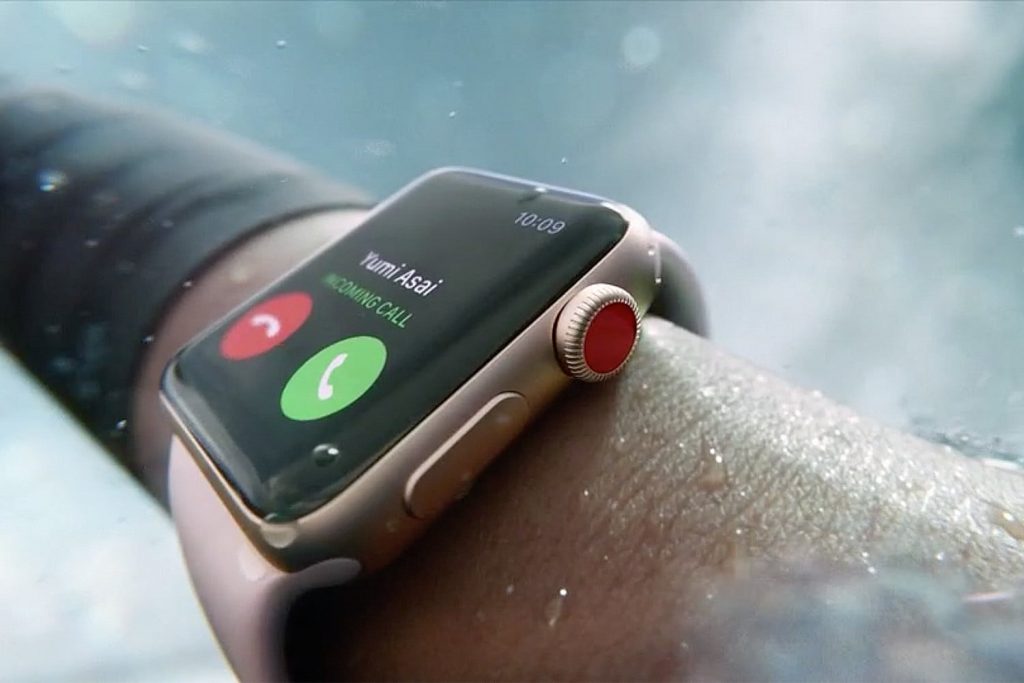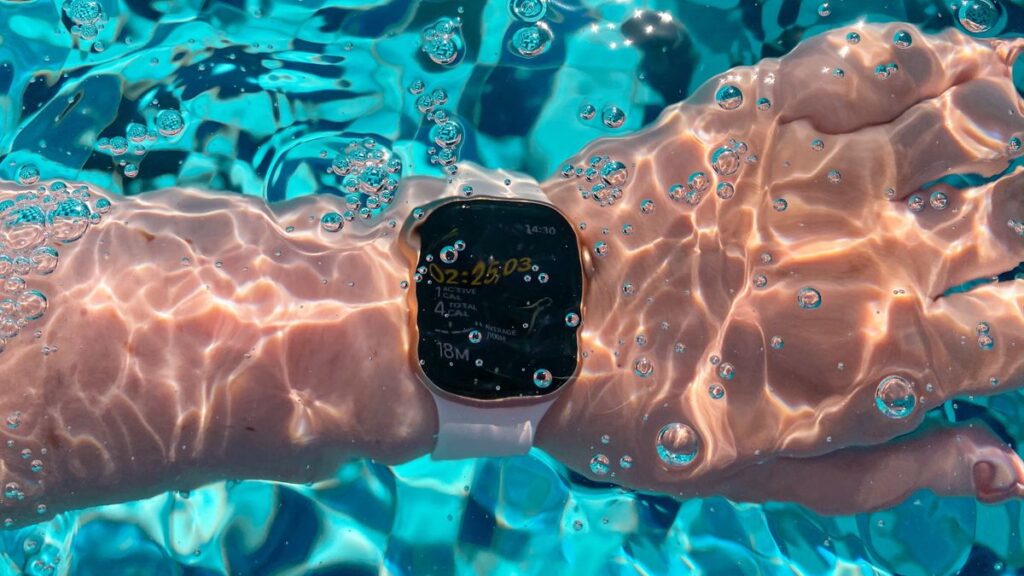The question of whether Apple Watches are “waterproof” is one that has intrigued and, frankly, confused many consumers. We live in a world where smartwatches have become indispensable companions, tracking our fitness, delivering notifications, and even making calls. The ability to wear a smartwatch while swimming, showering, or simply navigating a rainy day is a significant advantage. The term “waterproof,” however, is often misused and misunderstood, particularly when applied to electronics. In reality, no electronic device is truly “waterproof” in the absolute sense. What we are really talking about is water resistance, the ability of a device to withstand water exposure to a certain degree without sustaining damage. This distinction is crucial because it impacts how we use and care for our expensive gadgets.
Apple Watches have evolved significantly over the years, with each new generation boasting improvements in water resistance. This has led to a growing expectation that these devices can handle a variety of water-related activities. But just how far can you push the boundaries? Can you take your Apple Watch into the ocean? What about the hot tub? These are important questions to answer if you want to protect your investment and ensure the longevity of your device. Understanding the specific water resistance ratings of your Apple Watch model is essential for making informed decisions about its use.

This article delves deep into the world of Apple Watch water resistance. We’ll explore the different ratings, the technologies that make this possible, and the practical implications for everyday use. We’ll dissect the often-misunderstood terms, like “water resistant” and “swimproof.” We’ll also provide real-world examples, offer expert insights, and equip you with the knowledge you need to confidently use your Apple Watch around water. From the early models to the latest releases, we’ll cover the evolution of Apple Watch water resistance, explaining the advancements and the potential pitfalls. So, whether you’re a seasoned Apple Watch user or considering purchasing your first one, this comprehensive guide will help you navigate the watery world of smartwatches.
Understanding Apple Watch Water Resistance: A Deep Dive
The terms “waterproof” and “water resistant” are often used interchangeably, but in the context of electronics, they represent very different concepts. True waterproof implies an absolute barrier, impervious to any water ingress under any circumstance. This is practically impossible to achieve in a device with moving parts, buttons, and openings. Water resistance, on the other hand, signifies the ability to withstand water exposure to a certain degree. This is achieved through a combination of seals, gaskets, and design features that prevent water from entering the internal components. The level of water resistance is typically measured and indicated by a rating system, usually based on the International Organization for Standardization (ISO) standard 22810:2010.
The ISO 22810:2010 Standard and Water Resistance Ratings
The ISO 22810:2010 standard outlines the testing procedures and requirements for watch water resistance. This standard defines different levels of resistance, expressed in terms of atmospheric pressure (ATM) or meters (m). Understanding these ratings is critical to interpreting the water resistance capabilities of your Apple Watch. For example, a watch rated at 50 meters (5 ATM) means it has been tested to withstand pressure equivalent to a depth of 50 meters under specific conditions. However, this doesn’t mean you can actually take your watch diving to that depth. The testing is conducted in a controlled environment and doesn’t account for the dynamic pressures created by movement in water or other factors like temperature changes. The actual usable depth is typically much less than the rated depth.
Different Water Resistance Ratings for Apple Watches
Apple has consistently improved the water resistance of its Apple Watch models over the years. However, the specific ratings vary depending on the model and generation. It’s crucial to consult the official Apple documentation for your specific watch model to confirm its water resistance rating. Generally, Apple Watches are rated as follows:
- Apple Watch Series 2 and later: These models are water-resistant up to 50 meters under ISO standard 22810:2010. This means they are suitable for shallow-water activities like swimming in a pool or ocean. However, they should not be used for scuba diving, waterskiing, or other high-velocity water activities.
- Apple Watch Ultra and Ultra 2: These models are water-resistant up to 100 meters under ISO standard 22810:2010. They are designed for recreational scuba diving (to 40 meters) and high-speed water sports. They also include advanced features like a depth gauge and water temperature sensor.
- Early Apple Watch models (Series 1 and earlier): These models are splash-resistant but not water-resistant. They can withstand splashes of water, such as from washing your hands, but should not be submerged in water.
Always check the Apple Watch specifications for your specific model on the Apple website or in the user manual to confirm the exact water resistance rating.
The Technologies Behind Apple Watch Water Resistance
Apple employs several technologies to achieve water resistance in its watches. These technologies have evolved with each new generation, leading to improved performance and reliability. Key components include:
- Seals and Gaskets: These are critical for preventing water from entering the watch casing. They are strategically placed around the display, buttons, and other openings to create a watertight seal.
- Adhesives: Specialized adhesives are used to bond the components together, creating a strong and water-resistant seal.
- Design of Openings: Even small openings, like the speaker and microphone ports, are designed to minimize water ingress. These openings often feature mesh covers or other protective elements.
- Water Ejection Mechanisms: Some Apple Watch models have features that help eject water from the speaker and microphone. This can be achieved through sound vibrations.
These technologies work in concert to create a barrier against water intrusion. However, it’s important to remember that these are not foolproof. The effectiveness of these measures can degrade over time due to wear and tear, exposure to chemicals, or temperature fluctuations.
Practical Implications and Real-World Examples
Understanding the water resistance rating is crucial for making informed decisions about how you use your Apple Watch. For example, if your Apple Watch is rated at 50 meters, you can generally swim with it in a pool or the ocean. However, you should avoid activities that expose the watch to high-pressure water, such as waterskiing or scuba diving (unless you have an Apple Watch Ultra). Here are some real-world examples to illustrate the practical implications:
- Showering: You can generally wear your Apple Watch in the shower, but avoid using soaps, shampoos, and conditioners, as these can affect the seals.
- Swimming: Apple Watches rated at 50 meters are suitable for swimming in pools and the ocean. The Apple Watch Ultra can be used for recreational diving up to 40 meters.
- Washing Dishes: Your Apple Watch can withstand washing dishes, but avoid prolonged exposure to hot water.
- Hot Tubs and Saunas: The extreme temperatures in hot tubs and saunas can damage the seals of your Apple Watch. It is recommended to remove your watch before entering these environments.
- Water Sports: Activities like waterskiing and jet skiing generate high-pressure water and are generally not recommended for standard Apple Watch models. The Apple Watch Ultra is designed for these activities.
Case Study: A user took their Series 6 Apple Watch to a water park, exposed it to high-pressure water from a water slide, and experienced water damage. This highlights the importance of understanding that even though a watch is water-resistant, it’s not designed for extreme conditions.
Water Resistance vs. Water Damage: What You Need to Know
While Apple Watches are designed to withstand water exposure, they are not immune to water damage. Understanding the difference between water resistance and water damage is crucial for protecting your investment. Water damage can occur even if the watch is used within its specified water resistance limits. This can be due to a variety of factors, including wear and tear, exposure to certain substances, and improper use. The key is to be aware of potential risks and take appropriate precautions.
Factors That Can Compromise Water Resistance
Several factors can compromise the water resistance of an Apple Watch over time. These factors can weaken the seals and gaskets, making the watch more susceptible to water damage. It’s important to be mindful of these factors to extend the life of your device.
Wear and Tear
Regular use can lead to wear and tear on the seals and gaskets. Over time, these components can degrade, reducing their effectiveness in preventing water ingress. This degradation is accelerated by exposure to temperature changes, chemicals, and physical stress. Therefore, it’s essential to inspect your watch regularly for any signs of damage and consider professional servicing if necessary.
Exposure to Chemicals
Exposure to chemicals, such as soaps, shampoos, lotions, and sunscreen, can damage the seals and gaskets. These chemicals can penetrate the protective layers and cause corrosion or degradation. Always rinse your Apple Watch with fresh water after exposure to these substances. Avoid applying any products directly to the watch.
Temperature Fluctuations
Extreme temperature changes can affect the seals and gaskets. Rapid changes in temperature can cause the materials to expand and contract, potentially creating gaps that allow water to enter. Avoid exposing your Apple Watch to extreme heat or cold for prolonged periods. For example, do not leave your watch in a hot car or expose it to freezing temperatures.
Impacts and Drops
Impacts and drops can damage the watch casing and compromise the water resistance. Cracks or dents in the casing can create pathways for water to enter. Even minor impacts can affect the internal components, potentially leading to water damage. Always handle your Apple Watch with care and consider using a protective case.
Signs of Water Damage
Recognizing the signs of water damage is crucial for taking timely action and potentially saving your device. Here are some common indicators:
- Fogging or condensation under the display: This is a clear sign that water has entered the watch.
- Malfunctioning display: Water damage can cause the display to malfunction, displaying distorted images, or becoming unresponsive.
- Unresponsive buttons or touchscreen: Water can short-circuit the internal components, causing buttons and the touchscreen to stop working.
- Reduced battery life: Water damage can affect the battery’s performance and reduce its lifespan.
- Corrosion or rust: Internal corrosion or rust is a sign of water damage.
- Unusual noises from the speaker or microphone: Water can damage the speaker and microphone, causing distorted or muted sound.
If you suspect water damage, immediately stop using the watch and seek professional assistance. Do not attempt to dry the watch yourself using a hairdryer or other heat sources, as this can cause further damage.
What to Do if Your Apple Watch Gets Wet
If your Apple Watch is exposed to water, follow these steps to minimize the risk of damage:
- Rinse with fresh water: If the watch has been exposed to saltwater, chlorine, or other chemicals, rinse it thoroughly with fresh, clean water.
- Wipe dry: Use a soft, lint-free cloth to wipe the watch dry. Pay close attention to the openings, such as the speaker and microphone ports.
- Eject water: If your watch has a water ejection feature, activate it. This usually involves swiping up from the bottom of the watch face and tapping the water droplet icon.
- Turn off the watch (if necessary): If you suspect water has entered the watch, turn it off immediately.
- Allow to dry: Place the watch in a well-ventilated area and allow it to dry completely before using it again. Avoid using a hairdryer or other heat sources.
- Seek professional assistance: If you notice any signs of water damage, such as fogging or malfunctioning, contact Apple Support or an authorized service provider.
Best Practices for Protecting Your Apple Watch
Taking proactive measures can significantly extend the life of your Apple Watch and protect it from water damage. These practices involve both preventative measures and proper care and maintenance. Following these guidelines can help ensure your device remains functional and reliable for years to come.
Daily Care and Maintenance
Implementing a few simple habits can go a long way in protecting your Apple Watch. These daily care practices can minimize the risk of water damage and keep your watch looking and performing its best.
Regular Cleaning
Regularly clean your Apple Watch to remove dirt, debris, and other contaminants. Use a soft, lint-free cloth to wipe the watch, including the display, casing, and band. You can slightly dampen the cloth with fresh water if needed, but avoid using any harsh chemicals or cleaning agents.
Avoid Harsh Chemicals
Avoid exposing your Apple Watch to harsh chemicals, such as soaps, shampoos, lotions, and sunscreen. These substances can damage the seals and gaskets, compromising the water resistance. If your watch comes into contact with these chemicals, rinse it thoroughly with fresh water immediately.
Inspect for Damage
Regularly inspect your Apple Watch for any signs of damage, such as cracks, dents, or scratches. These can compromise the water resistance. If you notice any damage, consider getting the watch serviced. Pay close attention to the screen and the back of the watch.
Using Your Apple Watch Safely Around Water
Knowing how to use your Apple Watch safely around water is crucial for avoiding damage. This involves understanding the limitations of your watch’s water resistance and taking appropriate precautions.
Know Your Watch’s Rating
Familiarize yourself with your Apple Watch’s specific water resistance rating. Consult the Apple website or your user manual to confirm the rating. This will help you understand the limitations of your watch and avoid exposing it to conditions it is not designed to withstand.
Avoid High-Impact Activities
Avoid high-impact activities in water, such as waterskiing, jet skiing, and scuba diving (unless you have an Apple Watch Ultra). These activities can generate high-pressure water that can damage the watch. The Apple Watch Ultra is designed for recreational diving. Be aware of the limitations.
Remove Before Certain Activities
Remove your Apple Watch before entering saunas or hot tubs, as the extreme temperatures can damage the seals. Also, consider removing it before activities that involve exposure to chemicals, such as applying lotions or sunscreen. It is always better to be safe than sorry.
Additional Protection Measures
Consider using additional protection measures to further safeguard your Apple Watch.
Protective Cases
Use a protective case to shield your Apple Watch from impacts and scratches. These cases can provide an extra layer of protection against accidental damage, especially during outdoor activities or sports. There are many cases available. Research to find the best one for you.
Screen Protectors
Apply a screen protector to protect the display from scratches and impacts. Screen protectors can help prevent damage to the screen and maintain its clarity. These are a cheap and effective option. Consider a screen protector when purchasing a new watch.
Summary: Key Takeaways on Apple Watch Water Resistance
The question of whether Apple Watches are “waterproof” is complex, but the answer is clear: they are water-resistant to varying degrees. Understanding the specific water resistance rating of your Apple Watch model is crucial for responsible use. From the Series 2 onwards, most models are suitable for swimming and other shallow-water activities, while the Apple Watch Ultra offers enhanced capabilities for recreational diving and high-speed water sports.
The ISO 22810:2010 standard provides a framework for understanding water resistance ratings. The ratings are typically expressed in meters (m) or atmospheres (ATM), indicating the pressure a watch can withstand. It is important to remember that these ratings represent controlled testing conditions and do not guarantee protection in all scenarios. Real-world conditions, such as dynamic water pressure and temperature fluctuations, can affect a watch’s ability to resist water.
- Apple Watches are designed to be water-resistant, not waterproof.
- Water resistance ratings vary depending on the model.
- The Apple Watch Ultra offers the highest level of water resistance.
- Factors like wear and tear, chemicals, and temperature changes can compromise water resistance.
- Regular cleaning and maintenance are essential for protecting your watch.
- Know your watch’s limits and avoid activities that exceed them.
Proactive measures, such as regular cleaning, avoiding harsh chemicals, and using protective accessories, can significantly extend the life of your Apple Watch and protect it from water damage. If you suspect water damage, it’s crucial to take immediate action by rinsing the watch with fresh water, drying it carefully, and seeking professional assistance. Ultimately, responsible use and proactive care are the keys to enjoying your Apple Watch’s water-resistant features safely and for years to come.
Frequently Asked Questions (FAQs)
Can I wear my Apple Watch while swimming in the ocean?
Yes, if your Apple Watch is rated for swimming (50 meters or more water resistance). However, it’s advisable to rinse it with fresh water after exposure to saltwater, as salt can potentially damage the watch over time. Consult your watch’s specifications for details.
Is it safe to take my Apple Watch into a hot tub or sauna?
No, it’s generally not recommended. The high temperatures in hot tubs and saunas can damage the seals and gaskets of your Apple Watch, potentially leading to water damage. It’s best to remove your watch before entering these environments.
What should I do if my Apple Watch gets wet?
If your Apple Watch gets wet, rinse it with fresh water (if exposed to saltwater or chemicals), wipe it dry with a soft cloth, and activate the water ejection feature if available. If you suspect water has entered the watch or notice any malfunctions, seek professional assistance immediately.
Can I shower with my Apple Watch?
Yes, you can generally shower with your Apple Watch. However, avoid using soaps, shampoos, and conditioners, as these can affect the seals. It’s best to rinse the watch with fresh water after showering.
Does AppleCare+ cover water damage?
Yes, AppleCare+ generally covers accidental damage, including water damage. However, it’s always a good idea to review the specific terms and conditions of your AppleCare+ plan to confirm the coverage details. Check the warranty documentation.



